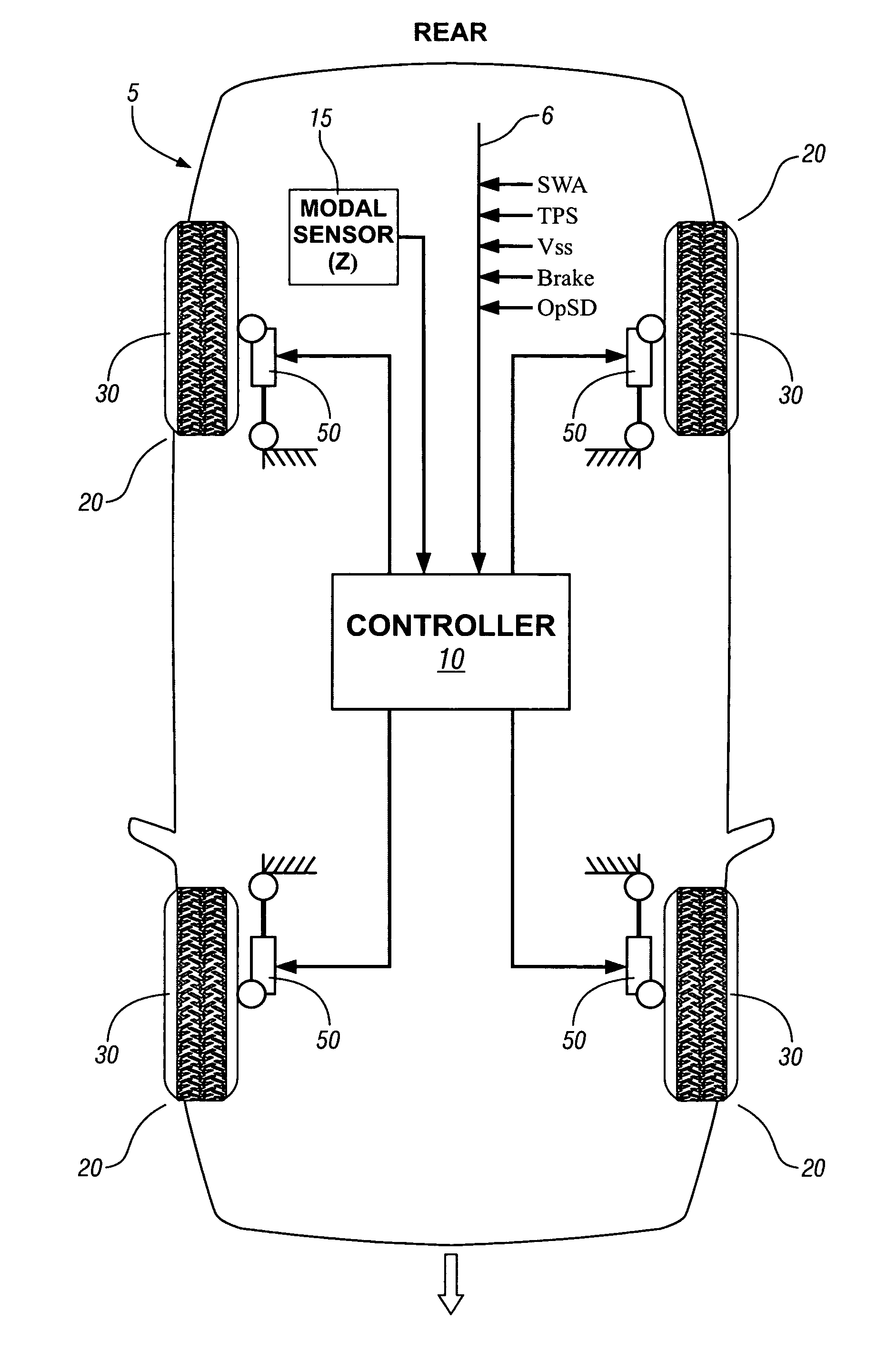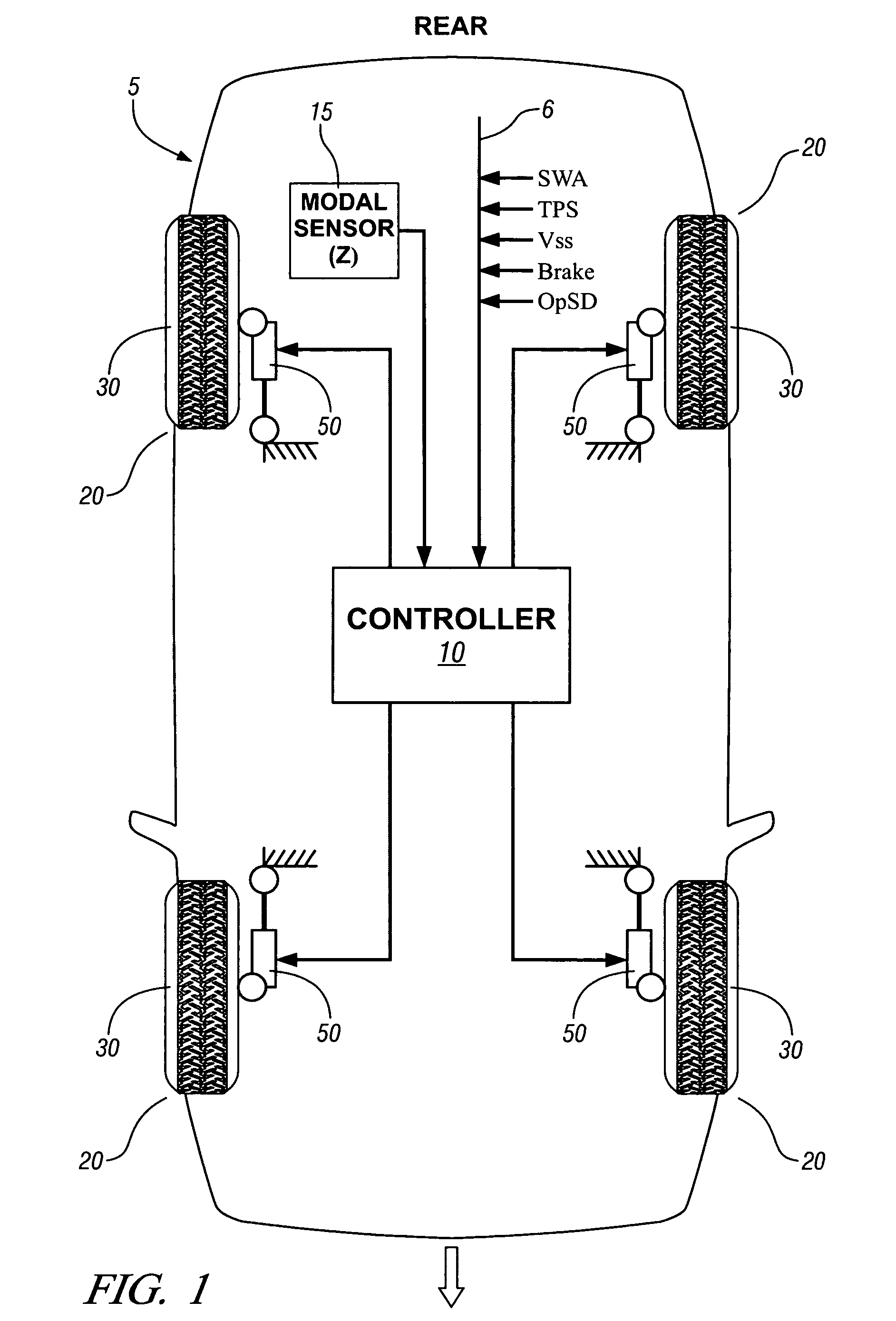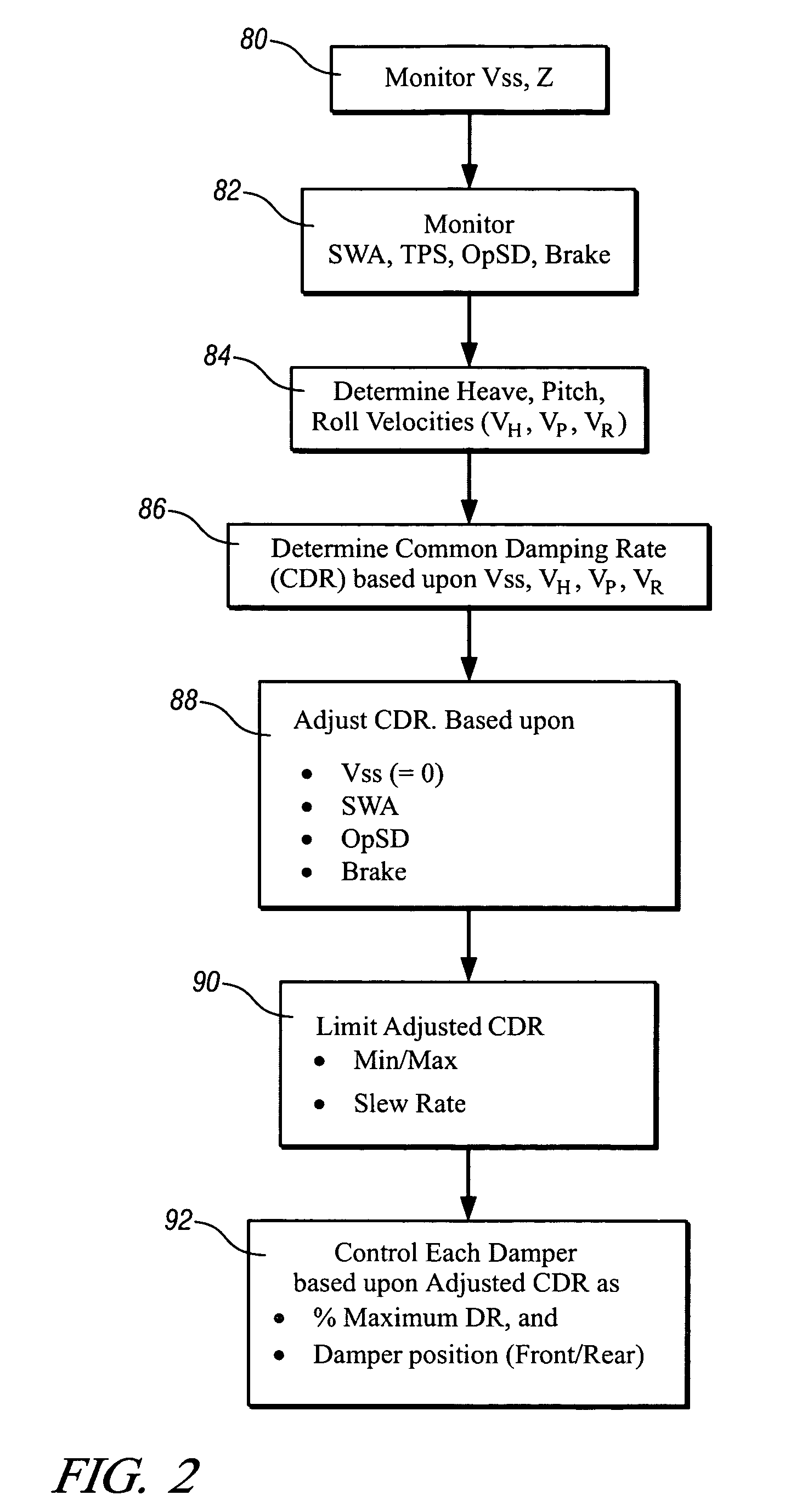Method and apparatus for controlling damping of a vehicle suspension
a technology of suspension and damper, applied in the field of active control of vehicle suspension systems, can solve the problems of damper system control valve noise and often unattainable control force, and achieve the effects of reducing noise, vibration and harshness, and limiting the rate of damper setting chang
- Summary
- Abstract
- Description
- Claims
- Application Information
AI Technical Summary
Benefits of technology
Problems solved by technology
Method used
Image
Examples
Embodiment Construction
[0021]Referring now to the drawings, wherein the showings are for the purpose of illustrating the invention only and not for the purpose of limiting the same, FIG. 1 shows a system which has been constructed in accordance with an embodiment of the present invention. The exemplary system comprises a passenger vehicle 5 intended for use on highways, although it is understood that the invention described herein is applicable on vehicles and other suspended bodies that are able to employ a controllable suspension damping system.
[0022]Referring again to FIG. 1, the exemplary vehicle 5 includes a plurality of systems, including a propulsion system and a controllable suspension damping system. The vehicle architecture preferably includes a control system operable to control various vehicle systems through execution of embedded algorithms and calibrations. The typical control system is able to control various vehicle systems by using one or more embedded controllers to execute on-board algo...
PUM
 Login to View More
Login to View More Abstract
Description
Claims
Application Information
 Login to View More
Login to View More - R&D
- Intellectual Property
- Life Sciences
- Materials
- Tech Scout
- Unparalleled Data Quality
- Higher Quality Content
- 60% Fewer Hallucinations
Browse by: Latest US Patents, China's latest patents, Technical Efficacy Thesaurus, Application Domain, Technology Topic, Popular Technical Reports.
© 2025 PatSnap. All rights reserved.Legal|Privacy policy|Modern Slavery Act Transparency Statement|Sitemap|About US| Contact US: help@patsnap.com



